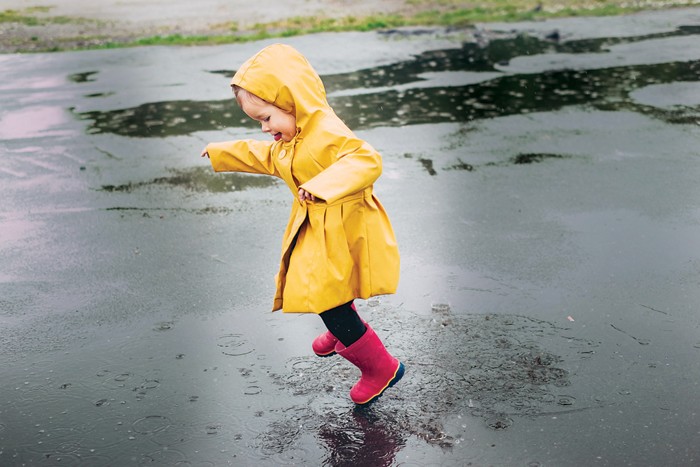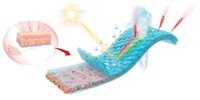Advertisement
Grab your lab coat. Let's get started
Welcome!
Welcome!
Create an account below to get 6 C&EN articles per month, receive newsletters and more - all free.
It seems this is your first time logging in online. Please enter the following information to continue.
As an ACS member you automatically get access to this site. All we need is few more details to create your reading experience.
Not you? Sign in with a different account.
Not you? Sign in with a different account.
ERROR 1
ERROR 1
ERROR 2
ERROR 2
ERROR 2
ERROR 2
ERROR 2
Password and Confirm password must match.
If you have an ACS member number, please enter it here so we can link this account to your membership. (optional)
ERROR 2
ACS values your privacy. By submitting your information, you are gaining access to C&EN and subscribing to our weekly newsletter. We use the information you provide to make your reading experience better, and we will never sell your data to third party members.
Consumer Products
What’s that Stuff
What’s the chemistry that helps raincoats keep us dry and comfortable?
Layers of material and specialized chemistry have always been key to waterproof apparel
by Bethany Halford
April 10, 2018
| A version of this story appeared in
Volume 96, Issue 16

Whether singin’ in the rain like Gene Kelly or playing guitar in a purple-tinted version of it like Prince, the best way to stay dry in a downpour is to wear a raincoat. While raincoats have evolved in the 195 years since waterproof fabric was first patented, clever chemistry has always been key to their success.
The first raincoats came about thanks to innovations in making rubber solutions. Today, high-end rainwear relies on fluoropolymer materials and cutting-edge construction. Raincoats may have been a risky business venture in the 1800s, but in the 21st century, their sales are booming: The market for waterproof breathable textiles could reach $2.18 billion in revenue by 2022, according to a report from market research firm Global Market Insights. Health-conscious consumers are driving much of the market’s growth as they run, bike, and trek in all types of weather.
The rainy weather in his native Scotland is what likely inspired chemist Charles Macintosh, the man most commonly credited with inventing the modern raincoat. Necessity is the mother of invention, after all. In the U.K., raincoats are still called mackintoshes (with a k mysteriously added).
Before Macintosh, inventors had been working toward waterproofing fabric with a layer of rubber by dissolving it in a solvent and spreading it on material. But these fabrics tended to be sticky. “Macintosh’s brilliant idea to avoid the stickiness was simply to press two sheets of fabric together with the rubber sandwiched between them,” says John Loadman, a retired analytical chemist, rubber historian, and author of “Tears of the Tree: The Story of Rubber—a Modern Marvel.”
Macintosh patented the invention in 1823. At the time, he was using coal tar naphtha—a hydrocarbon waste product from the conversion of coal to streetlamp gas—as a solvent for the rubber. He spread the resulting goo between two sheets of fabric. Unfortunately, the waterproof assembly smelled terrible and tended to melt in hot weather. These disadvantages deterred most consumers, but sizable and steady demand from the armed forces and merchant navy kept Macintosh’s waterproof-fabric business afloat, Loadman says.
A few years later, English inventor Thomas Hancock improved on Macintosh’s original invention, making the material lighter, more pliable, less smelly, and as a result, more popular. Hancock’s “cold cure” vulcanization process, in which the rubber was treated with either a bath of a sulfur compound or the vapors of it, eliminated the material’s stickiness and, consequently, the need to use more than a single layer of fabric.
Advances in synthetic polymers and water-repellent coatings have since led to lighter, cheaper, and more colorful raincoats. These days, the focus is on making raincoat material comfortable to wear as well as waterproof. But Macintosh’s original idea of layering materials is still key to high-tech rainwear.
Modern waterproof fabrics often feature three layers in which a hydrophobic polytetrafluoroethylene (PTFE) membrane is sandwiched between two layers of fabric. This PTFE membrane is riddled with tiny pores—about 14 million/mm2—that are too small for water droplets to penetrate. The pores, however, are large enough for water vapor to pass through, so sweat from the wearer doesn’t accumulate inside the garment.
On the outer layer of fabric that faces the elements, a so-called durable water-repellent coating, usually made from a fluoropolymer, prevents water from saturating the material. Hydrophilic polyurethane often coats the membrane on the side that touches the inner layer of fabric, known as the backer, to soak up sweat and make the garment sturdier.
In recent years, waterproof-fabric makers have been working to make garments with greater air permeability, says Martin Hatfield, chief engineer with eVent fabrics. The company makes waterproof material for products sold by dozens of companies, including Eddie Bauer and REI. “What you gain by making it air permeable is a lot more comfort,” Hatfield says.
Advertisement
Some of eVent’s fabrics increase air permeability by removing the polyurethane coating from the PTFE membrane. The coating blocks airflow, so by removing it, air can push sweat through the PTFE more easily, preventing wearers from feeling stifled. This, Hatfield says, makes the raincoat more comfortable to wear when alternating between periods of activity and rest—for instance, when a skier works up a sweat on the slopes but then relaxes while riding the lift back up the mountain. The downside of removing the polyurethane, he says, is that the raincoat is less rugged and less resistant to solvents, so customers in the military and other specialized fields still prefer the polyurethane coating.
Mike Winterling, a product specialist with W. L. Gore & Associates, makers of the popular waterproof Gore-Tex textiles, agrees that customer comfort has become paramount. One way the company has made its activewear more comfortable has been to eliminate the top layer of fabric so that the PTFE membrane is on the garment’s exterior.
“The ability to eliminate that outer textile really has some great advantages in the performance of the product,” Winterling says. One problem with the outer layer is that over time, its durable water-repellent coating can lose its ability to make water bead up, so garments start to get wet and heavy. With Gore’s Shakedry technology, there is no outer layer of fabric or adhesive, making the apparel extremely lightweight, Winterling says.
To develop Shakedry, the company had to make the PTFE more durable and come up with a method for coloring the polymer because it doesn’t take dye like fabric does. Recent patents indicate that Gore increases durability by coating the PTFE with an oil-resistant polymer and that the company colors the material using ink-jet printing.
To test products that carry the Gore-Tex label, the company places prototypes of all garments made with the waterproof fabric into a living-room-size storm chamber. Here, enthusiastic Gore employee volunteers and paid participants (often college students from the nearby University of Delaware) get sprayed in a manner that mimics all types of wet weather.
Products are also tested in the company’s comfort chamber, which subjects garments to temperatures that range from –50 to 50 °C, relative humidity of 5–98%, wind speeds of 0.4–10 meters per second, and light that mimics natural sunshine.
Finally, products are subject to field testing. “There’s really no substitute for putting jackets on people and getting hours of wear, getting perceptions that people have as they’re wearing the garments, and then getting the garments back and being able to tear them apart to figure out what’s working well and where are the areas we can improve,” Winterling says.
Waterproof-fabric companies are also trying to improve their environmental footprint. Last year, Gore Fabrics, a subunit of W.L. Gore, announced it would work to eliminate perfluorinated chemicals of environmental concern from 85% of its consumer products and manufacturing processes by the end of 2020 and will tackle the remaining 15% by 2023. This includes some of the chemicals used to make the fabric’s water-repellent coatings. It doesn’t include PTFE, which Gore and the activist group Greenpeace conclude is not of environmental concern because of its large size, stability, and inability to be absorbed by the body.
Winterling acknowledges that the move away from perfluorinated chemicals presents a challenge. “Anytime you go back and start changing the chemistry and raw components, you need to understand how those changes are going to impact the performance of your product,” he says.
So, nearly 200 years after the first waterproof raincoat, chemistry still has an important part to play in making sustainable waterproof materials to protect people when weather won’t cooperate.
Update: This article was modified on April 10, 2018, to refresh its information.
CORRECTION: This story was updated on April 17, 2018. The original story incorrectly stated that polyurethane coatings in rainwear are on the fabric’s backer. They are, in fact, on the side of the PTFE membrane that touches the backer.




Join the conversation
Contact the reporter
Submit a Letter to the Editor for publication
Engage with us on Twitter